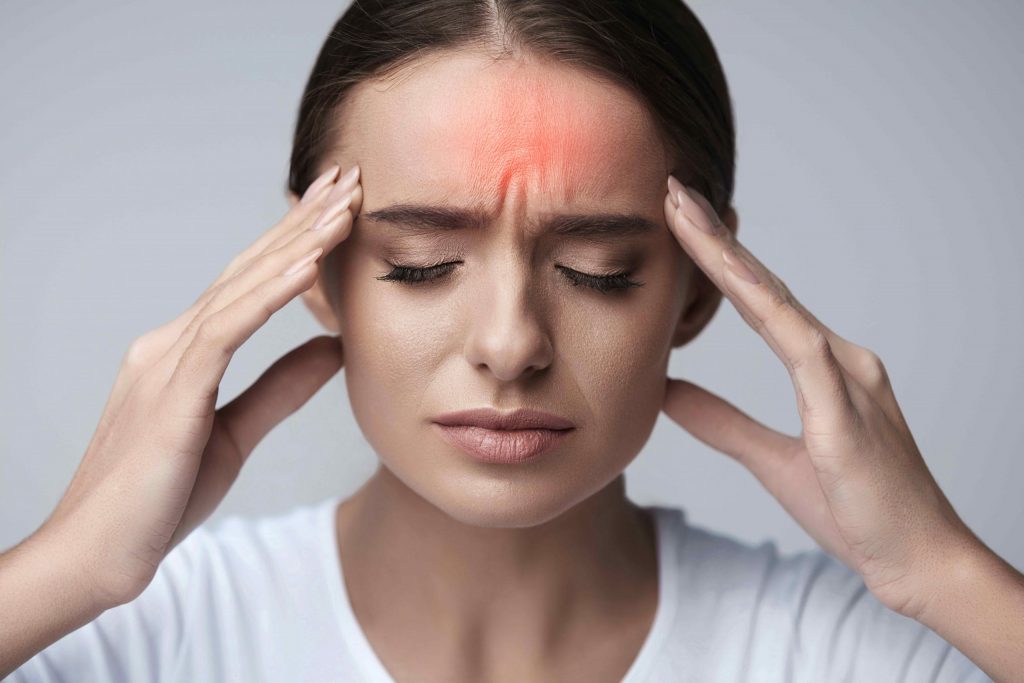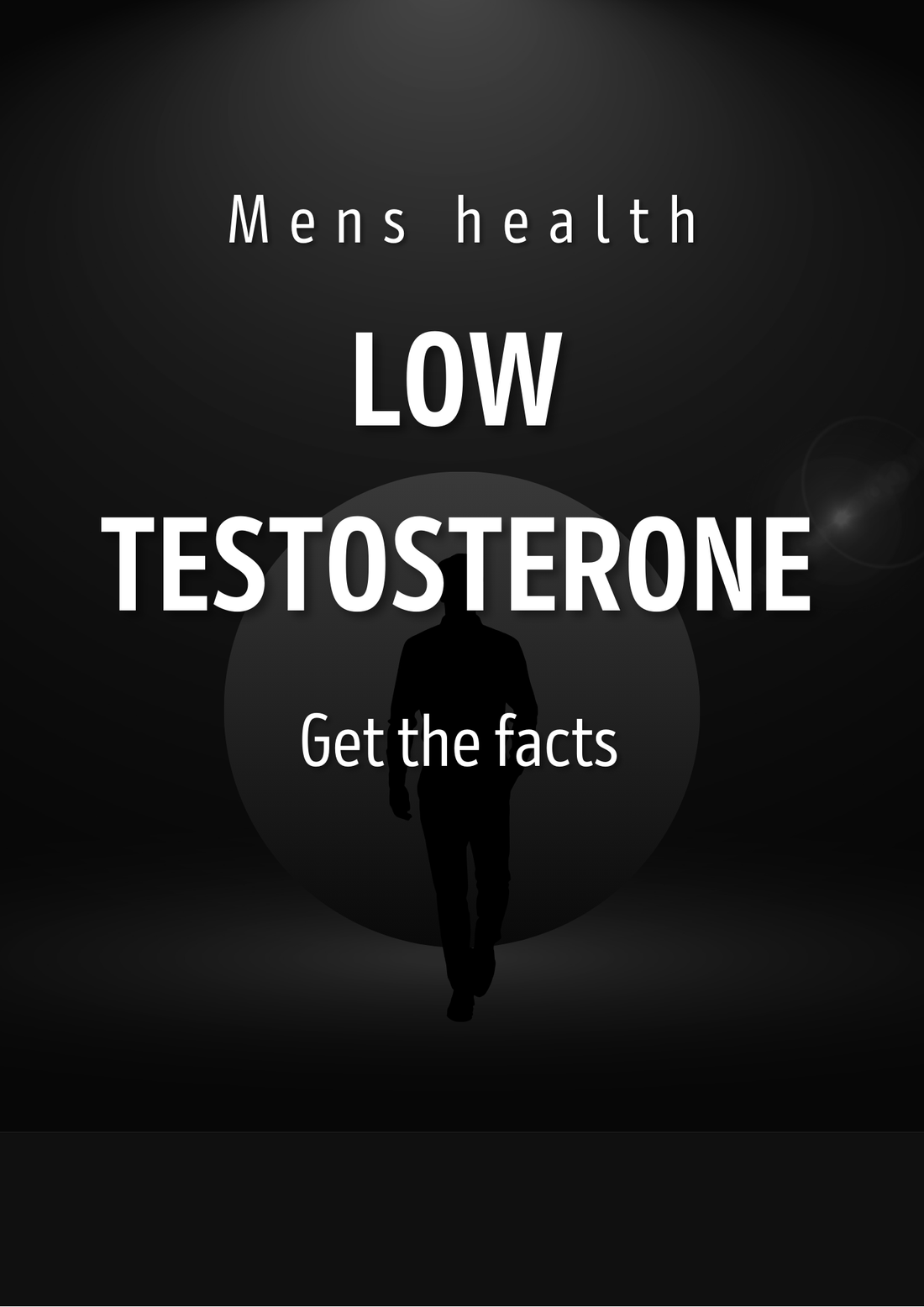A recent survey showed that two out of five people suffering from pain do not discuss pain with their GP. Timothy McClure, pharmacist, explains how this is a key area where community pharmacists can help.
Tim talks through some common painful conditions that people present to their pharmacist with and some treatments you can get in your local pharmacy. We hope you find this useful.
Some painful facts:
- The British Pain Society estimate around 10 million people suffer from pain every day (1)
- An estimated 4.9 million work days are lost through work related back pain annually (1)
- Over 10 million people in the UK regularly suffer headaches (2)
- One in seven UK adults suffer from migraines, with women more likely to be affected than men (3)
- 25 million work and school days are lost each year due to headaches and migraine (3)
- Chronic pain (pain that lasts for over twelve weeks despite medication or treatment) affects 400,000 people in Northern Ireland (4)

Tension Headaches
This is the most common form of headache. Symptoms include a dull, non-throbbing, often bilateral generalised pain often described as a tightness or weight pressing down on the head.
Pain is gradual in onset and tends to worsen through the day. Simple common analgesics (painkillers) such as paracetamol or ibuprofen (NSAID's) should be recommended as a first line treatment.(5)
Many soluble and orodisperible formulations of paracetamol and ibuprofen are currently on the market. These products can provide faster analgesia owing to more rapid absorption once taken.(5) Should simple analgesia fail to control symptoms, compound analgesia (such as paracetamol or ibuprofen combined with codeine) can be recommended.
It should be emphasized that OTC products containing codeine can cause addiction and should only be used for a maximum of three days.
It is also worth noting that a recent Cochrane review concluded that a dose of caffeine equivalent to a mug of coffee (≥ 100 mg) added to a standard dose of paracetamol or ibuprofen provided a small but important (5% - 10%) increase in the proportion of patients who experience a good level of pain relief.(6)
Prolonged use of analgesics for headaches can make symptoms worse.
Here are 6 things you can do on your own without using medication:
- Apply heat or ice. Both can help relieve headache pain. Some doctors recommend heat before getting a headache and ice once a headache is in progress. Other people find heat to be effective during a headache. So if one method doesn't work for you, try the other. In general, heat increases blood flow to head and neck muscles and can help relax them. Ice reduces the sensitivity of pain nerve endings and can help override pain impulses.
- Watch your posture. Poor posture can contribute to headaches. People who work in the same position for long periods of time are especially susceptible to this. If your job requires you to stay in a fixed position, be sure to stretch, stand up, move around and take breaks every hour or so.
- Stretch your neck and shoulder muscles. Tightness in these areas commonly accompanies headaches. Loosening these muscles can stimulate circulation and help you relax, both of which may help relieve your headache.
- Get a massage. Neck and shoulder muscle massage improves circulation, relieves muscle tension, and can reduce the pain of a headache in progress. Done regularly, massage can also help to prevent headaches.
- Practice relaxation techniques. Achieving a state of deep relaxation on a regular basis can increase your ability to handle stress, a leading contributor to tension headaches. Read
- Exercise regularly. Added to the list of well-known benefits of regular exercise is the fact that it can help to combat problem headaches. Exercise has a positive effect on brain chemistry that benefits many headache sufferers.
Migraines

One in five women and one in fifteen men will develop a migraine at some time in their life.(7) Symptoms include a unilateral throbbing pain of moderate to severe intensity that is often associated with nausea and lethargy (tiredness). Some patients may also experience visual or neurological auras.(3)
Like tension headaches, simple common analgesics such as paracetamol or ibuprofen should be recommended as a first line treatment.(5) These should be taken as soon as possible for maximum benefit. Aspirin is also a first line option but in most circumstances, other non-steriodal anti-inflammatory drugs (NSAIDS) such as ibuprofen are preferred.(8)
As migraines are associated with gastric stasis (movement in the stomach stops/slows down), soluble or orodispersible formulations will maximise analgesic absorption. Approximately 60% of migraine suffers can expect a reduction in pain from moderate/severe to mild/none two hours after treatment with simple analgesia, but only a quarter will be pain-free within this time.(5)
Compound analgesics (2 painkillers in one preparation) offer an alternative should first line treatment fail. Migraleve is a short term (up to three days) treatment for nausea and headache associated with a migraine attack when this is not relived by paracetamol, ibuprofen or aspirin. This product contains codeine, paracetamol and an anti-sickness medicine called buclizine.(7)
Sumatriptan is a 5HT1 agonist that is licensed for the acute relief of migraine attacks where there is a clear diagnosis of migraine. For years it was available of prescription, but now you can buy over the counter in your pharmacy. The supply of sumatriptan is associated with various product license restrictions and your pharmacist will have to be satisfied that these criteria are fulfilled before selling. For example, someone with uncontrolled high blood pressure cannot buy this drug.
Dental pain
Analgesics should be used prudently in dental care as a temporary measure until the cause of the pain has been dealt with. Most dental pain is relieved effectively by NSAIDs such as ibuprofen. Paracetamol has analgesic and antipyretic effects (prevent fever) but no anti-inflammatory action. Combination analgesic preparations containing ibuprofen or paracetamol with codeine have not been shown to provide greater relief of pain than an adequate dose of ibuprofen or paracetamol given alone. (9)
Your pharmacist can also provide you with clove oil, which is a mixture of cloves and other aromatic spices. It is analgesic (pain killing) and anti bacterial in nature.
Period pain
Period pain is a normal part of the menstrual cycle usually felt as painful muscle cramps in the abdomen, which can spread to the back and thighs. The pain normally lasts 48 to 72 hours, although it can last longer. Studies have shown that anti-inflammatories, when given orally, are effective in 80% to 85% of women.
A Cochrane review concluded anti-inflammatories were significantly more effective in relieving moderate to severe period pain compared to placebo, that is, giving the patient no treatment at all.
Current over the counter treatment of period pain include ibuprofen and naproxen. The latter is licensed to relieve period pain in women aged between 15 and 50 years (Feminax Ultra).

- stopping smoking – smoking is thought to increase the risk of period pain
- exercise – you may not feel like exercising during a painful period, but being active may reduce pain; try some gentle swimming, walking or cycling
- heat – putting a heat pad or hot water bottle (wrapped in a tea towel) on your tummy may help reduce pain
- warm bath or shower – taking a warm bath or shower can relieve pain and help you relax
- massage – light, circular massage around your lower abdomen may also help reduce pain
- relaxation techniques – relaxing activities, such as yoga or pilates, may help distract you from feelings of pain and discomfort
- transcutaneous electronic nerve stimulation (TENS) – a small battery-operated device that delivers a mild electrical current to your tummy to help reduce pain
Sprains and strains
Sprains are caused by forcing a joint into an abnormal position that overstretches or twists ligaments. Strains involve the partial or complete tearing of muscle fibres. Although varied in presentation, pharmacy treatment for sprains and strains tend to be the same. In addition to advising rest, icing, compression and elevation of the affected area, Over The Counter analgesia can be recommended.(5)
Paracetamol should be offered first line, with oral anti-inflammatories -NSAID's, (ibuprofen) only considered 48 hours after the initial injury as inflammation is a necessary part of the healing process.(10) A recent Cochrane review found no significant difference between NSAIDs and paracetamol in people with sprains and strains for pain relief, swelling or return to function at seven days or over. However, there was some evidence that those treated with NSAIDs had slightly more side effects related to the stomach or intestines.(11)
Topical NSAIDs offer an alternative to oral analgesics with minimal adverse systemic side effects. There is strong evidence to support the use of topical diclofenac and topical ibuprofen gel in the treatment of acute soft tissue injuries like strains and sprains.(12)

Back pain
Acute low back pain (acute LBP) is most often caused by a sudden injury to the muscles and ligaments supporting the back, resulting in muscle spasms or a strain or tear in the muscles and ligaments.(5)
Although often prescribed by doctors, recent studies have called the effectiveness of paracetamol into question for relieving acute LBP. Studies found that paracetamol does not produce better outcomes compared to placebo (using no medicine at all) for people with acute LBP (it is uncertain if it has any effect on chronic LBP). (13)

Cochrane reviews suggest oral NSAIDs such as ibuprofen are effective for short-term symptomatic relief in patients with acute LBP without sciatica. A seven day course of ibuprofen tablets can be recommended unless patient is contra-indicated from using NSAIDs - if they are asthmatic or have stomach ulcers. (14)

Osteoarthitis
Osteoarthitis (OA) is a painful, degenerative joint disease that often affects the hips, knees, neck, lower back, or small joints of the hands. Joint flexibility is reduced. In addition to non-pharmacological treatments such as exercise, paracetamol or NSAID (ibuprofen) tablets can be recommended in the management of pain in patients with hip or knee OA.(15)
Topical therapies (directly on to the skin), namely diclofenac or ibuprofen gel, are also a first line treatment for osteoarthritis with strong evidence supporting their use, particularly for those who find the gastrointestinal side effects of oral NSAIDs such as ibuprofen intolerable.(11,15)
Topical NSAID formulations act most effectively on more superficial sites of pain such as in osteoarthritic joints in the hands and knees. A recent Cochrane review cited that approximately 60% of patients with OA using a topical NSAID preparation reported reduced pain after six to twelve weeks.(16)

Chronic pain
Chronic or persistent pain is pain that carries on for longer than 12 weeks despite medication or treatment.
Most people get back to normal after pain following an injury or operation. But sometimes the pain carries on for longer or comes on without any history of an injury or operation.
If you have been struggling with pain for more than 12 weeks, there are many services that can help.
Long-term pain has many causes, such as arthritis, back problems, an old injury, illness or nerve damage.
Contact a GP
Your first stop should be a GP so you can discuss your pain in all its forms.
The GP may:
- carry out a physical examination
- discuss your pain history
- identify where the pain is coming from
- record your level of pain
- check for signs of any illness that could be causing your pain or making it worse
- ask how your pain is affecting your life
The GP may suggest trying some painkillers for short-term pain relief. However, painkillers are generally not considered a primary way to manage long-term pain.
If appropriate, the GP may suggest ways for you to stay active, which can help ease pain and improve your general wellbeing.
You may also be referred for complementary therapy to see if that helps with the pain.
You should be offered advice on how to better manage your pain on a day-to-day basis, such as by using self-help techniques.
Support groups
There's lots of self-help advice available from a variety of organisations supporting people living with long-term pain, such as:
Charities specialising in specific conditions, such as arthritis or fibromyalgia, may also offer more targeted pain management advice.
Some of these organisations run helplines and self-help groups, where you can talk to and meet other people with long-term pain.
Pain clinics
If you find you're having difficulty managing your pain, ask the GP for a referral to a specialist pain clinic.
Pain clinics offer a wide range of treatments and support. They aim to support you in developing self-help skills to control and relieve your pain.
The pain toolkit is a very useful way to find practical ways to deal with your pain
References
1 – British Pain Society. Media resources. https://www.britishpainsociety.org/media-resources/ [Online]
2 – NHS Choices. Headaches. http://www.nhs.uk/conditions/Headache/Pages/Introduction.aspx [Online]
3 – Migraine Trust. https://www.migrainetrust.org/about-migraine/migraine-what-is-it/facts-figures/ [Online]
4 – https://www.bbc.com/news/uk-northern-ireland-47200986 [Online]
5 – P. Rutter. Community Pharmacy: Symptoms, Diagnosis and Treatment
6 – Cochrane Review. Caffeine as an analgesic adjuvant for acute pain in adults. http://www.cochrane.org/CD009281/SYMPT_caffeine-as-an-analgesic-adjuvant-for-acute-pain-in-adults [Online]
7 – Migraleve. http://www.migraleve.co.uk/ [Online]
8 – NICE Clinical Knowledge Summaries. Analgesia - mild to moderate pain. https://cks.nice.org.uk/analgesia-mild-to-moderate-pain [Online]
9 – British National Formulary Issue 72
10 – NICE Clinical Knowledge Summaries. Sprains and strains. https://cks.nice.org.uk/sprains-and-strains [Online]
11 – Cochrane Review. Oral non-steroidal anti-inflammatory drugs compared with other oral pain killers for sprains, strains and bruises. http://www.cochrane.org/CD007789/MUSKINJ_oral-non-steroidal-anti-inflammatory-drugs-compared-other-oral-pain-killers-sprains-strains-and [Online]
12 – C. Argoff. Mayo Clinic Review. Topical analgesics in the management of acute and chronic pain.
13 – Cochrane Review. Paracetamol for low back pain. http://www.cochrane.org/CD012230/BACK_paracetamol-low-back-pain [Online]
14 – Cochrane Review. Non-steroidal anti-inflammatory drugs for low back pain. http://www.cochrane.org/CD000396/BACK_non-steroidal-anti-inflammatory-drugs-for-low-back-pain [Online]
15 – SIGN Guideline 136. Management of chronic pain.
16 – Cochrane Review. Can topical NSAIDS help relieve the pain of arthritis. http://uk.cochrane.org/news/can-topical-nsaids-help-relieve-pain-arthritis [Online]





